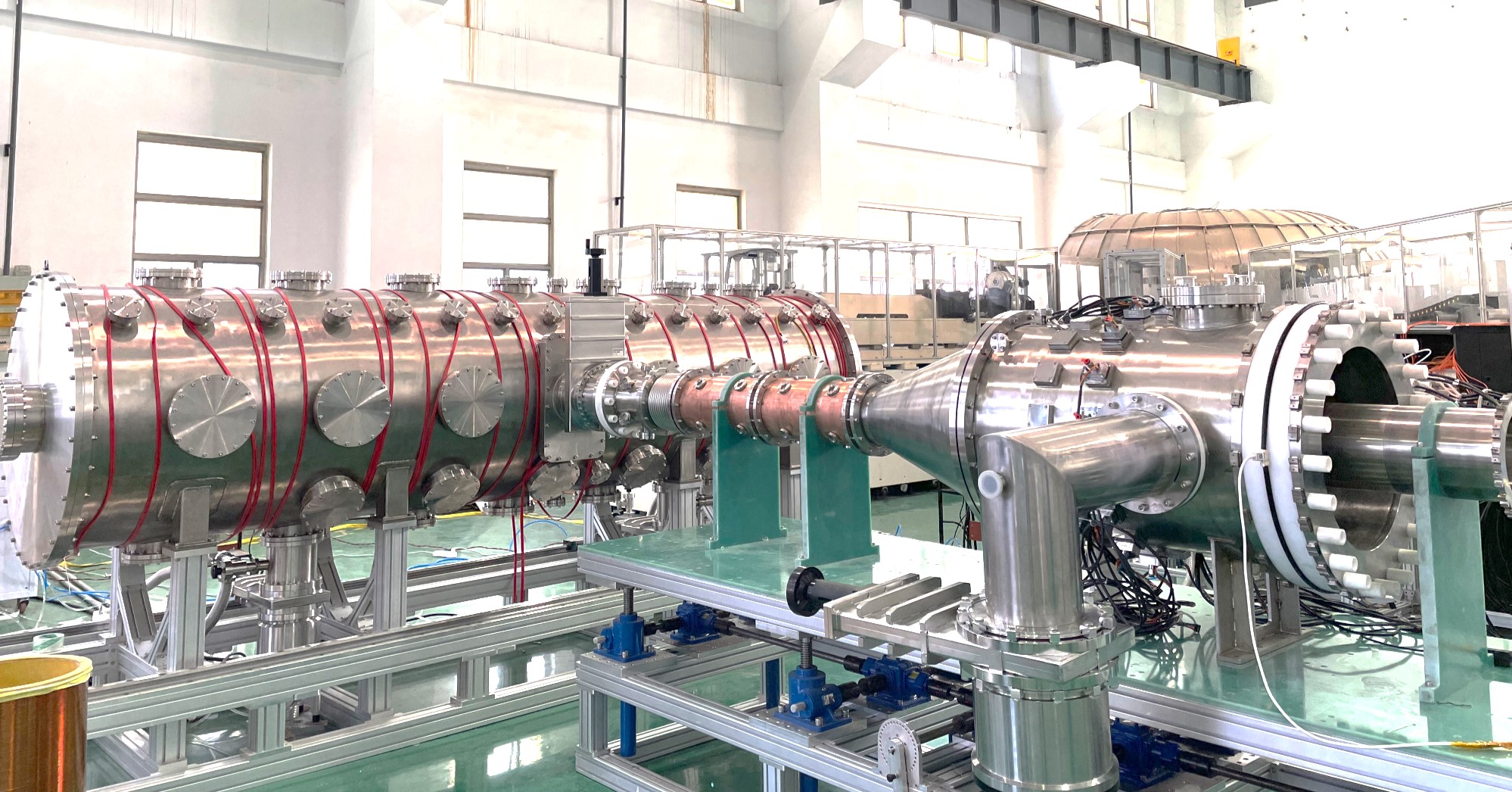
Central fueling is a crucial issue for the development of the next-step fusion device, such as the China Fusion Engineering Test Reactor (CFETR), since it’s beneficial to increase the pressure gradient of trapped particles, optimize the bootstrap current and improve the tritium burnup rate as well as reduce the requirement of tritium breeding ratio for tritium self-sufficiency. CT-injection is one of the most promising methods for central fueling of large tokamak fusion devices because of its extremely high injection velocity.
Recently, with the joint efforts of a team from the Institute of Plasma Physics, Hefei Institutes of Physical Science (HFIPS) and their collaborators, the first plasma discharge was completed, which marked the successful realization of the key mission of the Compact Torus device.
"It took us seven months to design, construct, install and test,” said Dr. KONG Defeng excitedly, who led the team, “the discharge is a big success.“
The team has been manufacturing the world's first Compact Torus device (EAST-CT) for medium and large tokamak central fueling. The device will be tested on EAST, which will lay a solid foundation for future fusion reactors such as CFETR to verify new central fueling technology.
In this research, aiming at the characteristics of strong magnetic field and high discharge parameters of EAST Tokamak, the team comprehensively optimized the structural design of the Compact Torus system and improved the construction and installation process.
Besides, they independently designed a set of experimental test platform to simulate the discharge environment of EAST, which provided a reliable guarantee for the optimization of charging parameters.
For the next step, the Compact Torus R & D team will continue to carry out discharge optimization and develop Compact Torus technology. Through cooperation with domestic and foreign research institutions and universities, the team will promote the rapid application of Compact Torus technology in central fueling and fracture mitigation of fusion reactor, help nuclear fusion research, serve the development of energy technology and innovate the future.
This work is supported by the National Key Research and Development Program of China No. 2017YFE0300500, the Institute of Energy, Hefei Comprehensive National Science Center under Grant No. 19KZS205, the International Partnership Program of Chinese Academy of Sciences no. Y16YZ17271. Users with Excellence Program of Hefei Science Center CAS 2020HSC-UE008.
The Compact Torus research team consists of the members from Institute of plasma physics, Chinese Academy of Sciences, University of science and technology of China, Hefei University of technology and Shihezi University.

Compact Torus host system and test platform (Image by KONG Defeng)
Contact:
ZHAO Weiwei
Hefei Institutes of Physical Science (http://english.hf.cas.cn/)
Email: annyzhao@ipp.ac.cn